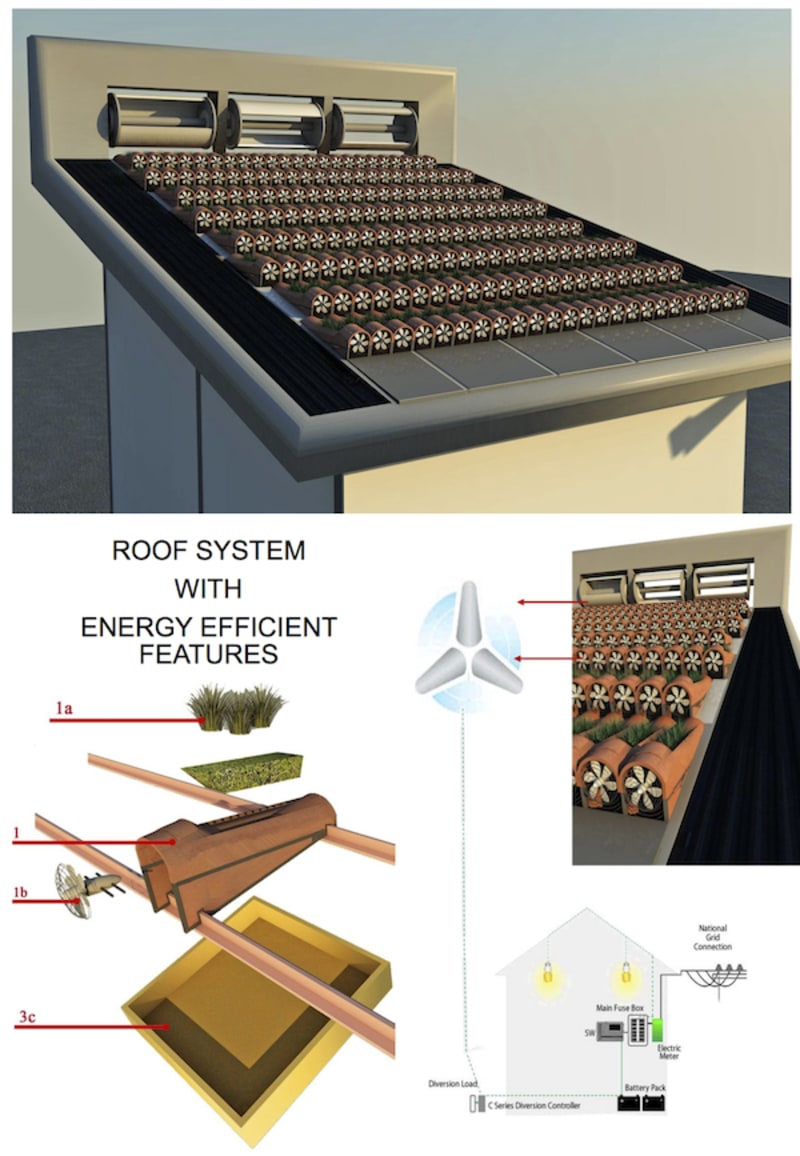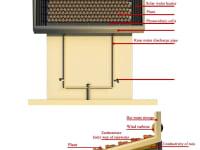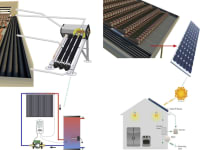[0001] Some roof systems provide vegetation growth on a roof of a building or other structure, which roof systems may be referred to as green roof systems. Typical green roof systems include a waterproof membrane applied to the surface of the roof, a layer of soil or other growing medium provided on top of the membrane, and vegetation provided in the soil. The green roof systems may result in lower energy costs for the building, improved roof appearance, noise reduction and increased roof life, and reduction in building’s temperature.
[0002] Some green roof systems can be used for filtering rain water. The rain water passes through the vegetation of the green roof system and enters a storage area. The water that has passed through the vegetation may not be potable, but may considered as “gray water” to be utilized for non-drinking activities such as for example, shower, toilets, and other cleaning type activities. However, such green roof systems may require a large area for installation and therefore may be difficult to install on buildings that have a limited space. Furthermore, such green roof system may not be configured to take advantage of various natural resources to generate electricity, provide drinking water, and/or provide clean air for the building.
[0003] Hence, there is a need for an improved roof system that can be configured to generate electricity, drinking water, and/or provide clean air for the building.
1. A roofing system comprising:
a preliminary water storage;
a tray configured to cover a roof of a building and direct water incident thereon to the preliminary water storage;
a central portion having a plurality of modules, each module having a respective chamber element and a first wind turbine housed inside each respective chamber element, and each chamber element forming a planting area on top of the chamber element; and
a support structure supporting the modules in adjacent rows, with each row at a different elevation from an adjacent row, wherein,
each module is configured to receive rain water, filter the received rain water, transfer the filtered rain water to the tray for passing to the preliminary water storage; and
the first wind turbine is configured to convert a wind energy into electrical energy.
[0020] The water turbine may be placed in the pathway of the water to the water storage. As the water is transferred from the roof to the water storage, the water may pass through the turbine, turning the turbine and generating electricity. The water heater may be a solar water heater and may be used to heat the water and provide hot water for the building. The hot water may be used for showering or washing dishes. The solar panel may be used to turn the solar energy to electricity for hot water and/or a solar panel may be used to heat the water. For example, in the absence of the sun, the generated electricity may be used to heat the water.
Like this entry?
-
About the Entrant
- Name:Mannan Ghanizadehgrayli
- Type of entry:teamTeam members:mannan ghanizadeh grayli, masoud valinejad shoubi , mojtaba valinejad shoubi
- Software used for this entry:fluent
- Patent status:patented








